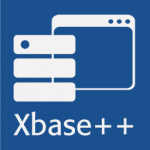Best practice
Best practice notes and information related to Xbase++
I Love Xbase++ (ILX)
The portal for Xbase++ developers worldwide
In software development, a monolithic object or class refers to a design where a single class performs a variety of functions that could logically be separated. These classes for example handle data access (like database queries), business logic (application-specific rules), and sometimes even...
The re-implementation of existing legacy software systems often faces significant challenges, and understanding these can illuminate why such projects frequently fail. This little write-up is far from complete but tries to create awareness regarding these important and very often underrated...
Introduction
Xbase++ is a versatile programming language that allows developers to create multi-threaded applications easily. In this article, we will explore how to use the Thread class in Xbase++ to create and manage an operating system thread capable of executing different tasks. We will...
Background
The SQL command ALTER TABLE can be used to modify the structure of an ISAM emulated SQL table on the PostgreSQL server. However, in order to preserve the ISAM emulation characteristic, some details have to be taken into account which are described in this article. This article does...
Background
One of the largest differences in how data is managed between SQL and ISAM is how deleted records are handled. In short:
ISAM: does mark a record as deleted. This way it is out of scope. To really get rid of the record you need to do a time consuming PACK operation.
SQL: does really...
Background
As you may have already realized, a PostgreSQL server or any SQL server in general is a "relatively" complicated story. The reason for that is basically that the server with the planner tries to replace you as a human. In ISAM you have the data model in mind, also the requirements of...
Xbase++ provides INIT procedures, a concepts which allows by a simple declaration of INIT before the procedure keyword to ensure that this procedure is executed before your procedure main is executed. An example is shown below.
INIT PROCEDURE startupMyModule()
// your code is
RETURN...
Background
The PostgreSQL columns of type TEXT and BYTEA allow the storage of large binary data (e.g. PDF documents or images) up to 1GB. If such column types are used in a table their data is accessed like any other data of the record when using the Xbase++ ISAM emulation. With each...
Very often applications support multiple tenants. A financial accounting solution used by a CPA is a typical example for that. However, there are other scenarios where the ability to switch between several tenants/customers is required. The following note gives an overview about the options with...
Rules:
Avoid the need for comments, write clear, readable and self describing code instead
Comments never describe the code and its syntax
Use comments to compensate for your failure to express yourself in code properly.
Do not write informative comments such as:
// returns normalized value...









